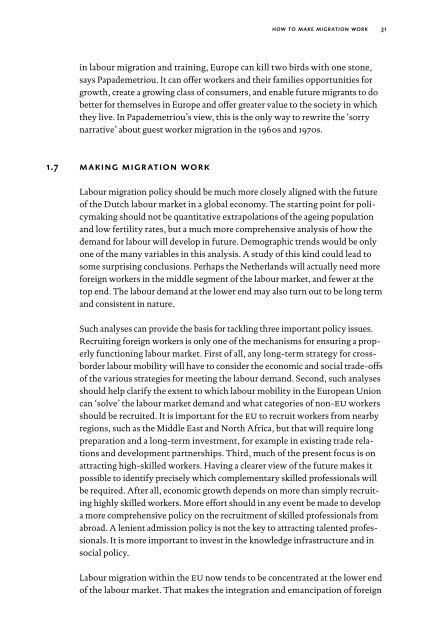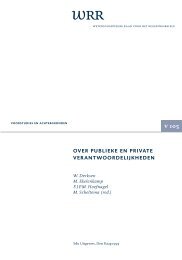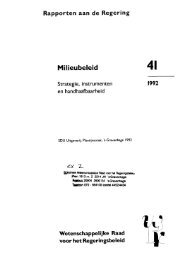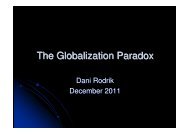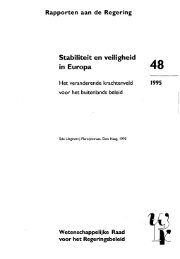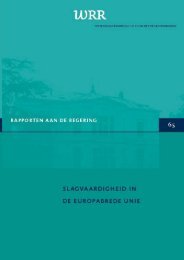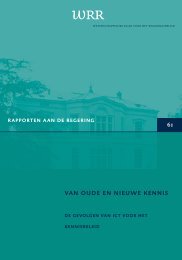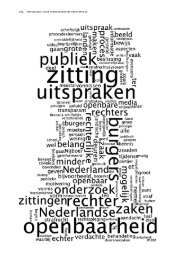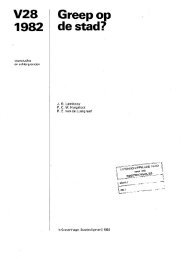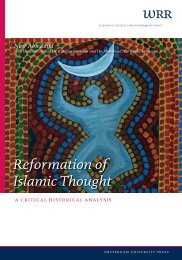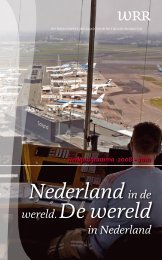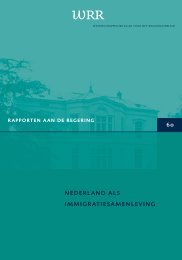Making Migration Work - Wetenschappelijke Raad voor het ...
Making Migration Work - Wetenschappelijke Raad voor het ...
Making Migration Work - Wetenschappelijke Raad voor het ...
- No tags were found...
You also want an ePaper? Increase the reach of your titles
YUMPU automatically turns print PDFs into web optimized ePapers that Google loves.
how to make migration work31in labour migration and training, Europe can kill two birds with one stone,says Papademetriou. It can offer workers and their families opportunities forgrowth, create a growing class of consumers, and enable future migrants to dobetter for themselves in Europe and offer greater value to the society in whichthey live. In Papademetriou’s view, this is the only way to rewrite the ‘sorrynarrative’ about guest worker migration in the 1960s and 1970s.1.7 making migration workLabour migration policy should be much more closely aligned with the futureof the Dutch labour market in a global economy. The starting point for policymakingshould not be quantitative extrapolations of the ageing populationand low fertility rates, but a much more comprehensive analysis of how thedemand for labour will develop in future. Demographic trends would be onlyone of the many variables in this analysis. A study of this kind could lead tosome surprising conclusions. Perhaps the Netherlands will actually need moreforeign workers in the middle segment of the labour market, and fewer at t<strong>het</strong>op end. The labour demand at the lower end may also turn out to be long termand consistent in nature.Such analyses can provide the basis for tackling three important policy issues.Recruiting foreign workers is only one of the mechanisms for ensuring a properlyfunctioning labour market. First of all, any long-term strategy for crossborderlabour mobility will have to consider the economic and social trade-offsof the various strategies for meeting the labour demand. Second, such analysesshould help clarify the extent to which labour mobility in the European Unioncan ‘solve’ the labour market demand and what categories of non-eu workersshould be recruited. It is important for the eu to recruit workers from nearbyregions, such as the Middle East and North Africa, but that will require longpreparation and a long-term investment, for example in existing trade relationsand development partnerships. Third, much of the present focus is onattracting high-skilled workers. Having a clearer view of the future makes itpossible to identify precisely which complementary skilled professionals willbe required. After all, economic growth depends on more than simply recruitinghighly skilled workers. More effort should in any event be made to developa more comprehensive policy on the recruitment of skilled professionals fromabroad. A lenient admission policy is not the key to attracting talented professionals.It is more important to invest in the knowledge infrastructure and insocial policy.Labour migration within the eu now tends to be concentrated at the lower endof the labour market. That makes the integration and emancipation of foreign


